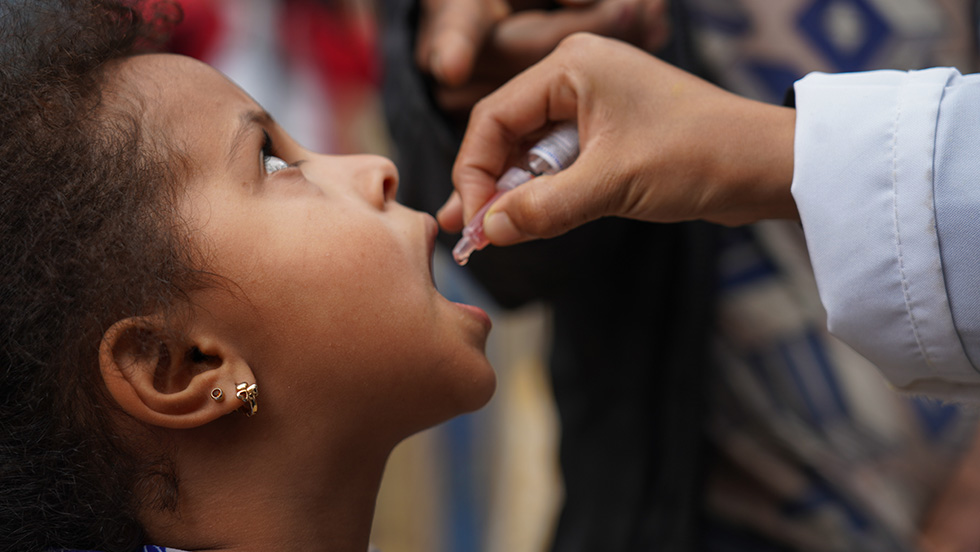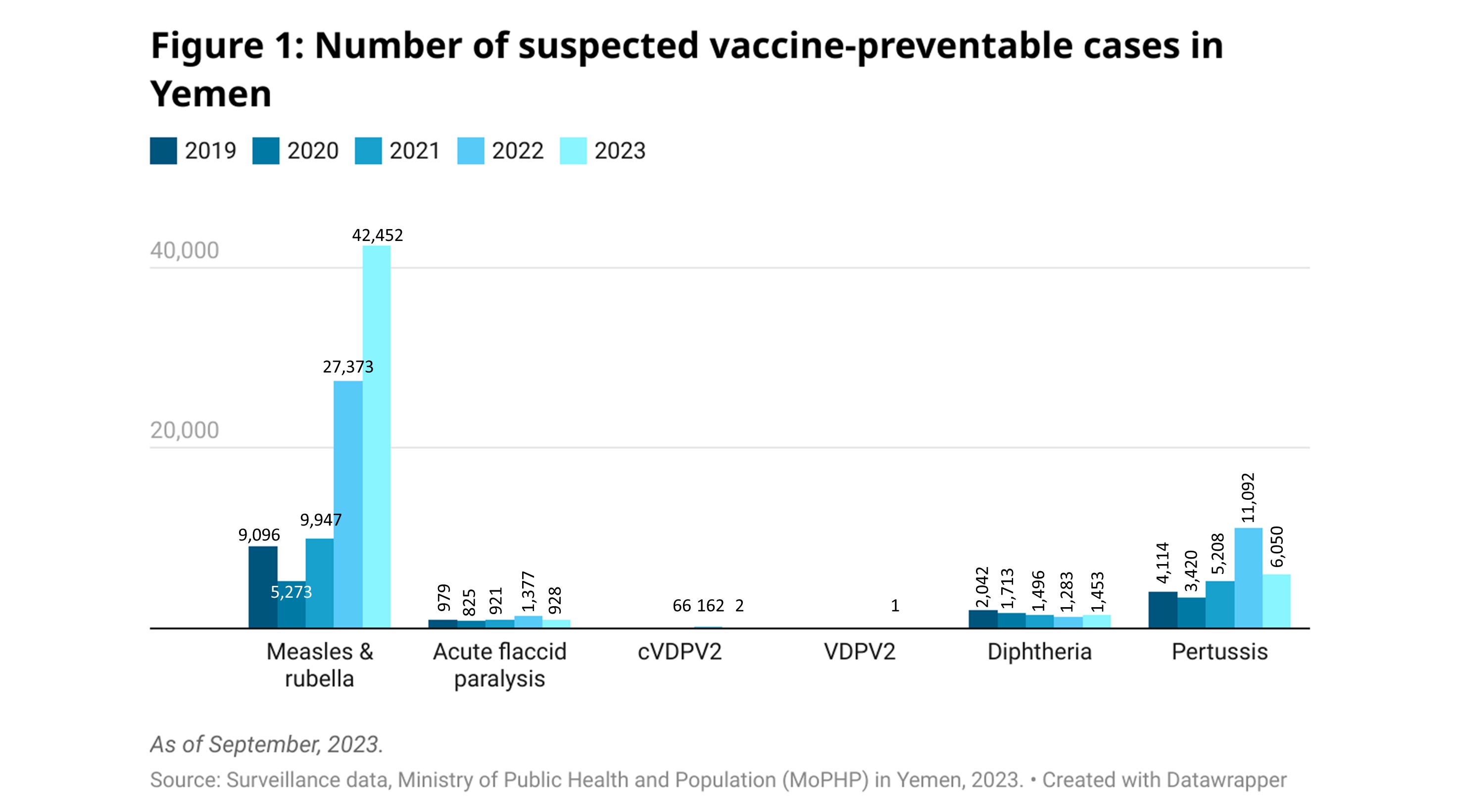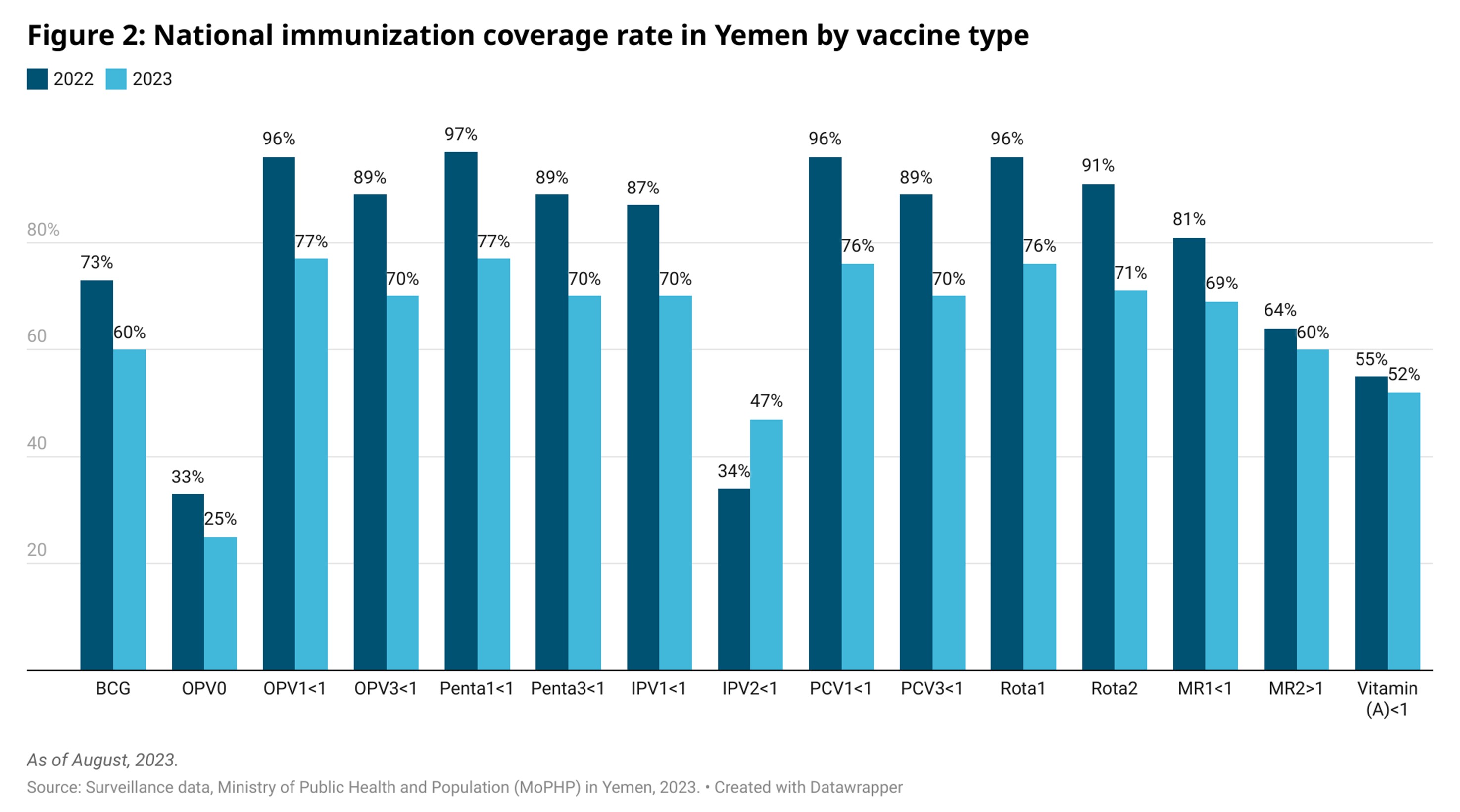
Current situation
Yemen is facing a re-emergence and rise in vaccine-preventable diseases and associated deaths among children. This is the result of economic decline and low incomes, displacement, and overcrowded living conditions in camps, coupled with an overwhelmed health system and low immunization rates.
Millions of children remain unreachable through routine immunization activities. According to the WHO-UNICEF National Immunization Coverage Estimate for 2022, about one third (27%) of children aged under 1 year in Yemen are not immunized against measles and rubella. Nor have these children received the minimum set of vaccines to sustain their lives.
Yemen joined the Global Polio Eradication Initiative (GPEI) in the 1990s and successfully eliminated the indigenous wild poliovirus in 2006. Yemen successfully interrupted the spread of circulating poliovirus type 2 (cVDPV2) in 2011–2012 and remained free of any polio outbreak until 2020.
The re-emergence in Yemen of poliovirus type 1 (cVDPV1), in 2020, was soon followed by the re-emergence of cVDPV2, in 2021. This has put Yemen back on the world map of 35 countries currently afflicted by this debilitating and incurable disease.
View Chart 1 in an interactive format
View Chart 2 in an interactive format
WHO vaccination efforts in Yemen
WHO works closely with Yemen’s Ministry of Public Health and Population and health partners to increase support for routine vaccination interventions. WHO also continues to work within the National Health Framework to provide technical and financial support to improve immunization rates among children.
These efforts include work to:
enhance national disease surveillance and data management, ensuring timely detection of cases;
maintain public health teams dedicated to vaccine-preventable diseases;
improve the quality and coverage rates of preventive and outbreak response campaigns;
support the implementation of the equity accelerator proposal to reduce the number of zero-dose children; and
implement integrated vaccination and outreach campaigns.
Since the re-emergence of cVDPV1 and cVDPV2, WHO has closely supported the Ministry of Public Health and Population to develop a polio outbreak response plan; implement outbreak response immunization activities; and intensify surveillance, advocacy and capacity-building efforts.
WHO support for Yemen’s national Expanded Programme on Immunization (EPI) has contributed significantly to decreasing childhood morbidity and mortality resulting from vaccine-preventable diseases. For full immunization against these deadly childhood diseases, a child needs only 5 visits to the health facility in the first year of life, plus a single visit in each of the second and fifth years of life.
About Yemen’s national EPI
Yemen’s national EPI was launched in 1974. It aims to reduce the incidence rates of maternal and neonatal tetanus, ensure full immunization of children aged under 1 year, and extend all new vaccines and preventive health measures to children in all of Yemen’s districts, to reduce the number of deaths associated with vaccine-preventable diseases.
Various new vaccines for childhood diseases have since been introduced. Currently, EPI offers every child in Yemen immunization against diphtheria, pertussis, tetanus, poliomyelitis, measles, rubella, pneumococcal disease , hepatitis B, diarrhoea caused by rotavirus , Hib pneumonia and tuberculosis. A surveillance system has also been set up within Yemen’s EPI, to report, investigate and respond to any outbreak related to vaccine-preventable diseases.
EPI has a set of standard indicators to evaluate progress on a quarterly, biannual and annual basis. This includes indicators for Pentavalent vaccine 1 and 3 coverage, to evaluate the accessibility of the services; and dropout rate. This helps assess the use of services by the community and the effectiveness of the surveillance system.




